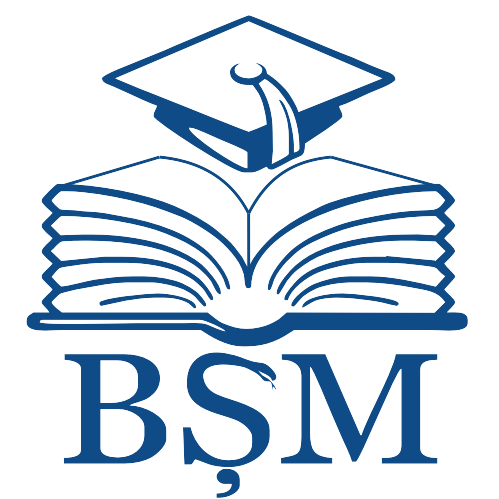|
|
- IRMS - Nicolae Testemitanu SUMPh
- 5. FACULTATEA DE FARMACIE / FACULTY OF PHARMACY
- Catedra de farmacie socială „Vasile Procopişin”
- MATERIALE ALE CONFERINȚELOR ȘTIINȚIFICE
- Conferinta științifică cu participare internațională ”Farmacia etică: istorie, realităţi şi perspective”: Dedicată memoriei Vasile Procopişin - Patriarhul farmaciei Moldave, doctor habilitat în ştiinţe farmaceutice, profesor universitar şi Nadejda Ciobanu, doctor în ştiinţe farmaceutice, conferenţiar universitar, Chișinău 19-21 aprilie 2018
Please use this identifier to cite or link to this item:
http://hdl.handle.net/20.500.12710/30876
| Title: | Aspectele farmacoterapeutice ale hipertensiunii cauzate de boala metabolică |
| Other Titles: | The pharmacotherapeutic aspects of metabolic disease caused by hypertension |
| Authors: | Scutari, Corina
Cavalji, Daria |
| Issue Date: | 2018 |
| Publisher: | Instituţia Publică Universitatea de Stat de Medicină şi Farmacie „Nicolae Testemiţanu” din Republica Moldova |
| Citation: | Corina SCUTARI și Daria CAVALJI. Aspectele farmacoterapeutice ale hipertensiunii cauzate de boala metabolică = The pharmacotherapeutic aspects of metabolic disease caused by hypertension. In: Farmacia etică: istorie, realităţi şi perspective: dedicată memoriei Vasile Procopişin - Patriarhul farmaciei Moldave, doctor habilitat în ştiinţe farmaceutice, profesor universitar şi Nadejda Ciobanu, doctor în ştiinţe farmaceutice, conferenţiar universitar, 19-21 aprilie 2018, Chișinău. Chișinău, 2018, pp. 263-265. ISBN 978-9975-3159-5-1. |
| Abstract: | Întroducere. Conform datelor Centrului Științifico-practic Sănătate
Publică şi Management Sanitar prevalența totală a hipertensiunii arteriale de
origine mtabolică în Republica Moldova, în anul 2016, a constituit 986,7 la
10000 de locuitori. Prevalența generală a populației pentru hipertensiunea
arterială a fost 732,0 la 10000 de locuitori. Pornind de la ideea că
ateroscleroza este cauza cea mai frecventă a hipertensiunii arteriale (peste
85%) şi că la baza fiziopatologiei aterosclerozei se află procesul dislipidemic,
pe de o parte, iar pe de altă parte urmărind obiceiurile alimentare cu excesele
de grăsimi şi adesea consumul de alcool în exces, însoțite de fumat şi mişcare
mai redusă, faptul că toate acestea se extind spre vârste tot mai tinere, am
acordat interes sporit acestor constatări.
Scopul lucrării. Studiul aspectelor contemporane ale particularităților
etiologice, clinice şi modalităților și farmacoterapeutice ale hipertensiunii
arteriale de origine metabolică.
Material și metode. În studiu au fost incluşi 100 locuitori ai Republicii
Moldova 74 bărbați şi 26 femei; 45 din mediul urban, 55 din mediul rural.
Rezultate. Conform analizei factorilor predispozanți în apariția HTA,
dislipidemia a fost cel mai frecvent factor de risc întâlnit (87,6%), mai
frecventă la femei(91,6%) decât la bărbați(84,0%), dar fără a exista diferențe
semnificative. Obezitatea a fost întâlnită la 66%, fumatul la 58,0%, iar
hiperglicemia la 47,6%. În lotul nostru de studiu aproape 60% dintre pacienți
au avut valori ale LDL-colesterolului cuprinse între 3-4 g/l. Aproape 42,0%
dintre pacienți au avut valori ale trigliceridelor cuprinse între 1,7-1,9 mmol/l
(trigliceridemia de graniță). S-a efectuat analiza procentuală a grupelor de
medicamente utilizate la bolnavii luați în studiu şi s-a constatat, că inhibitori
ai enimei de conversie au fost administrate la 69% bolnavi, preparatele βblocante la 58% pacienți, antidiabetice la 24,5% şi antiagregante plachetare –
la 41 %. Tratamentul cu statine reduce riscul complicațiilor cardiovasculare
aterosclerotice atât în prevenția primară cât şi în cea secundară. Dozele zilnice
eficiente de statină sunt: simvastatină 40 mg, pravastatină 40 mg, şi
atorvastatină 10 mg. Concluzie. • Conform spectrului lipidic identificat la pacienții cu hipertensiune de
origine metabolică, am constatat, că colesterolul seric total > 5 mmol/l a fost
identificat la 43 pacienți; LDL-colesterolul > 4 g/l a fost identificat la 64
pacienți.
• Tratamentul de bază cuprinde inhibitori ai enzimei de conversie, βblocante, blocanți ai receptorului angiotensinei (sartani), antidiabetice,
antiagregante plachetare și hipolipidemiante.
Introduction. According to the data of the Scientific and Practical Center
of Public Health and Sanitary Management, the total prevalence of high blood
pressure in metabolic origin in the Republic of Moldova in the year 2016 were
986.7 per 10000 inhabitants. The general population prevalence for
hypertension was 732.0 per 10000 inhabitants. Starting from the idea that
atherosclerosis is the most common cause of hypertension (over 85%) and
that at the base of the pathophysiology of atherosclerosis is the dyslipidemic
process, on the one hand, and on the other hand, following dietary habits with
excess fat and often consumption excessive alcohol, accompanied by smoking
and lesser movement, the fact that all of this is spreading to younger age, we
have given extra interest to these findings.
Obiective. The study of the contemporary aspects of the etiological,
clinical and modalities of pharmacotherapy of hypertension of metabolic
origin.
Material and methods. In the study were included 100 inhabitants of the
Republic of Moldova 74 men and 26 women ; 45 in urban areas, 55 in rural
areas.
Results. According to the analysis of predisposing factors of HTA,
dyslipidemia was the most common risk factor (87.6%), more frequent in
women (91.6%) than in males (84.0%), but there were no differences significant. Obesity was 66%, smoking at 58.0%, and hyperglycemia 47.6%. In
our study group, nearly 60% of patients had LDL-cholesterol levels ranging
from 3-4 g / l. Nearly 42.0% of patients had triglyceride levels ranging from
1.7-1.9 mmol / l (borderline triglyceridemia ). Percentage analysis of the drug
groups used in the patients studied was performed and it was found that
conversion enzyme inhibitors were administered to 69% of patients, βblocker preparations in 58% patients, anti diabetes to 24.5%, and platelet
antiaggregants – to 41%. Statin therapy reduces the risk of atherosclerotic
cardiovascular complications to both primary and secondary prevention.
Daily doses of statin are: simvastatin 40 mg, pravastatin 40 mg, and
atorvastatin 10 mg.
Conclusion.
• According to the identified lipid spectrum in patients with hypertension of
metabolic origin, we found that totals serum cholesterol> 5 mmol / l was
found in 43 patients; LDL-cholesterol> 4 g / l was identified in 64 patients.
• Basic treatment includes conversion enzyme inhibitors, β-blockers,
angiotensin receptor blockers (sartans ), anti diabetic agents, platelet
antiaggregants and hypolipidemic agents. |
| metadata.dc.relation.ispartof: | Conferinţa ştiinţifică cu participare internaţională "Farmacia etică: istorie, realităţi şi perspective": dedicată memoriei Vasile Procopişin - Patriarhul farmaciei Moldave, doctor habilitat în ştiinţe farmaceutice, profesor universitar şi Nadejda Ciobanu, doctor în ştiinţe farmaceutice, conferenţiar universitar, Chişinău 19-21 aprilie 2018 |
| URI: | https://ibn.idsi.md/vizualizare_articol/124852
https://repository.usmf.md/handle/20.500.12710/30876 |
| ISBN: | 978-9975-3159-5-1 |
| Appears in Collections: | Conferinta științifică cu participare internațională ”Farmacia etică: istorie, realităţi şi perspective”: Dedicată memoriei Vasile Procopişin - Patriarhul farmaciei Moldave, doctor habilitat în ştiinţe farmaceutice, profesor universitar şi Nadejda Ciobanu, doctor în ştiinţe farmaceutice, conferenţiar universitar, Chișinău 19-21 aprilie 2018
|
Files in This Item:
There are no files associated with this item.
Items in DSpace are protected by copyright, with all rights reserved, unless otherwise indicated.
|


